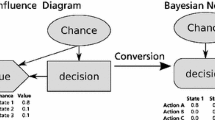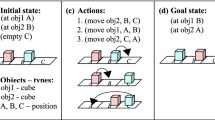Abstract
Programming of complex motor skills for humanoid robots can be a time intensive task, particularly within conventional textual or GUI-driven programming paradigms. Addressing this drawback, we propose a new programming-by-demonstration method called Kinesthetic Bootstrapping for teaching motor skills to humanoid robots by means of intuitive physical interactions. Here, “programming” simply consists of manually moving the robot’s joints so as to demonstrate the skill in mind. The bootstrapping algorithm then generates a low-dimensional model of the demonstrated postures. To find a trajectory through this posture space that corresponds to a robust robot motion, a learning phase takes place in a physics-based virtual environment. The virtual robot’s motion is optimized via a genetic algorithm and the result is transferred back to the physical robot. The method has been successfully applied to the learning of various complex motor skills such as walking and standing up.
Preview
Unable to display preview. Download preview PDF.
Similar content being viewed by others
References
Chalodhorn, R., Grimes, D.B., Grochow, K., Rao, R.P.N.: Learning to walk through imitation. In: IJCAI, pp. 2084–2090 (2007)
Nehaniv, C.L., Dautenhahn, K.: The correspondence problem. In: Imitation in animals and artifacts, pp. 41–61. MIT Press, Cambridge (2002)
Aleotti, J., Caselli, S., Reggiani, M.: Leveraging on a Virtual Environment for Robot Programming by Demonstration. In: IEEE/RSJ Intl. Conf. on Intelligent Robots and Systems IROS 2003, Workshop on Robot Programming by Demonstration, Las Vegas, USA (2003)
Hersch, M., Guenter, F., Calinon, S., Billard, A.: Dynamical system modulation for robot learning via kinesthetic demonstrations. IEEE Trans. on Robotics (2008)
Tani, J., Nishimoto, R., Namikawa, J., Ito, M.: Codevelopmental learning between human and humanoid robot using a dynamic neural-network model. IEEE Transactions on Systems, Man, and Cybernetics, Part B 38(1), 43–59 (2008)
McNerney, T.S.: From turtles to tangible programming bricks: explorations in physical language design. Personal Ubiquitous Comput. 8(5), 326–337 (2004)
Frei, P., Su, V., Mikhak, B., Ishii, H.: Curlybot: designing a new class of computational toys. In: CHI 2000: Proceedings of the SIGCHI conference on Human factors in computing systems, pp. 129–136. ACM, New York (2000)
Author information
Authors and Affiliations
Editor information
Editors and Affiliations
Rights and permissions
Copyright information
© 2009 Springer-Verlag Berlin Heidelberg
About this paper
Cite this paper
Ben Amor, H., Berger, E., Vogt, D., Jung, B. (2009). Kinesthetic Bootstrapping: Teaching Motor Skills to Humanoid Robots through Physical Interaction. In: Mertsching, B., Hund, M., Aziz, Z. (eds) KI 2009: Advances in Artificial Intelligence. KI 2009. Lecture Notes in Computer Science(), vol 5803. Springer, Berlin, Heidelberg. https://doi.org/10.1007/978-3-642-04617-9_62
Download citation
DOI: https://doi.org/10.1007/978-3-642-04617-9_62
Publisher Name: Springer, Berlin, Heidelberg
Print ISBN: 978-3-642-04616-2
Online ISBN: 978-3-642-04617-9
eBook Packages: Computer ScienceComputer Science (R0)




